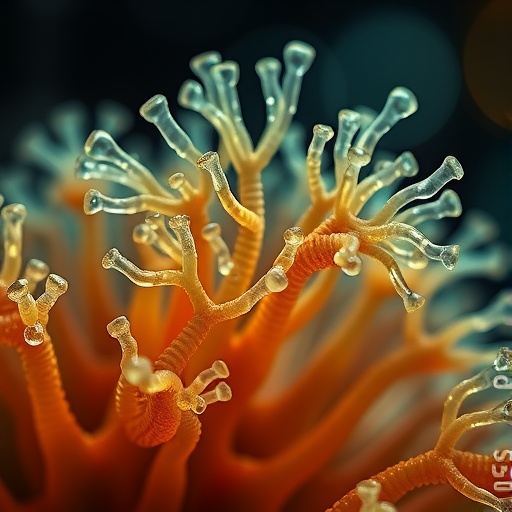In a groundbreaking discovery that reshapes our understanding of cellular death, researchers at Umeå University have observed programmed cell death mechanisms in microalgae that closely resemble those found in animal cells. This revelation, detailed in a recent publication in Nature Communications, offers compelling evidence that apoptosis, a well-characterized form of programmed cell death previously believed to be exclusive to multicellular animals, may have a far more ancient and universal evolutionary origin than scientists had assumed.
Programmed cell death (PCD) is a fundamental biological process through which organisms meticulously regulate the lifecycle of their cells. Unlike accidental necrosis caused by injury or disease, PCD is a controlled cellular dismantling that plays an indispensable role in development, tissue homeostasis, and immune system functioning. Among the pathways of PCD, apoptosis is the most extensively studied, typified by distinct morphological and biochemical hallmarks such as DNA fragmentation, cell shrinkage, and notably, the formation of apoptotic bodies—small, membrane-bound vesicles that encapsulate cellular debris destined for phagocytic removal.
Until now, the formation of apoptotic bodies was regarded as an evolutionary innovation unique to animals, integral to the complex intercellular communication and immune modulation observed in multicellular life forms. However, the new study spearheaded by Professor Christiane Funk’s team challenges this notion by demonstrating that the unicellular photosynthetic microalga Guillardia theta undergoes apoptosis featuring classic apoptotic bodies. These findings were made possible through advanced microscopy techniques that allowed researchers to visualize, for the first time, the discrete vesicles released during the microalgal cell’s programmed demise.
The implications of these results are profound, suggesting that the machinery and evolutionary blueprint for apoptosis were established long before the rise of multicellularity. This means the last common ancestor of modern animals and certain microalgae likely possessed the cellular toolkit for apoptosis, a mechanism perhaps initially evolved for managing cellular stress or maintenance within single-celled organisms. By detecting apoptotic bodies in Guillardia theta, the team has opened a new frontier of evolutionary cell biology, prompting a reevaluation of the timeline and origin of cell death pathways.
The research delves deeply into the physiological conditions triggering apoptosis in microalgae, indicating that environmental stressors or developmental cues could induce these death pathways even in photosynthetic unicellular organisms. The formation of apoptotic bodies serves not just as a structural hallmark but as a functional entity, possibly facilitating the orderly removal and recycling of cellular components within aquatic ecosystems. This controlled cellular self-destruction could have ecological consequences, affecting nutrient cycling and microbial community dynamics in marine environments.
Moreover, the discovery positions microalgal apoptosis as a potentially exploitable process in biotechnology and environmental management. Scientists speculate future applications might include harnessing programmed cell death to regulate harmful algal blooms—phenomena responsible for significant ecological damage and economic loss—or optimizing the harvesting of algal biomass by controlling the viability and turnover of cultures used in biofuel production and other industrial processes. However, Professor Funk cautions that these applications are still speculative and require extensive further research to translate these biological insights into practical tools.
The experimental approach utilized by the Umeå University team employed state-of-the-art microscopy combined with molecular probes that specifically label apoptotic bodies, enabling differentiation between apoptotic and other forms of cell death commonly observed in unicellular organisms, such as necrosis or autophagy. This methodological precision underscores the robustness of their conclusions and sets a new standard for investigating cell death mechanisms in diverse life forms.
From an evolutionary developmental biology perspective, this research bridges critical gaps by linking cell death pathways across distant branches of the tree of life. It posits that apoptosis might have originally evolved as a universal cellular housekeeping mechanism, which was then co-opted and elaborated upon during the evolution of complex multicellular organisms. The study thereby provides a novel framework for understanding how fundamental biological processes can be conserved and diversified to meet different organismal and ecological demands.
In conclusion, the revelation that apoptosis is not confined to animals but is also present in microalgae such as Guillardia theta reshapes foundational concepts in cell biology and evolution. It underscores the unity of life’s molecular strategies and opens exciting avenues for future research into cellular death, ecosystem dynamics, and biotechnological innovation. As researchers continue to unravel the complexities of programmed cell death across the biosphere, this discovery remains a landmark milestone, reminding us of the deep and intricate connections that unify all living beings on a cellular level.
Subject of Research: Cells
Article Title: Apoptotic bodies in phytoplankton suggest evolutionary conservation of cell death mechanisms
News Publication Date: 25-Sep-2025
Web References: http://dx.doi.org/10.1038/s41467-025-63956-4
Image Credits: Luisa Fernanda Corredor Arias
Keywords: Cell biology, Evolutionary developmental biology, Microbiology, Life sciences, Developmental biology, Plant sciences
Tags: apoptosis in microalgaecellular death mechanisms in organismscellular dismantling processesevolutionary origins of apoptosisimmune modulation in microalgaeimplications of PCD in evolutionintercellular communication in microalgaemicroalgae programmed cell deathNature Communications publicationprogrammed cell death in unicellular organismssimilarities between microalgae and animal cell deathUmeå University research findings





